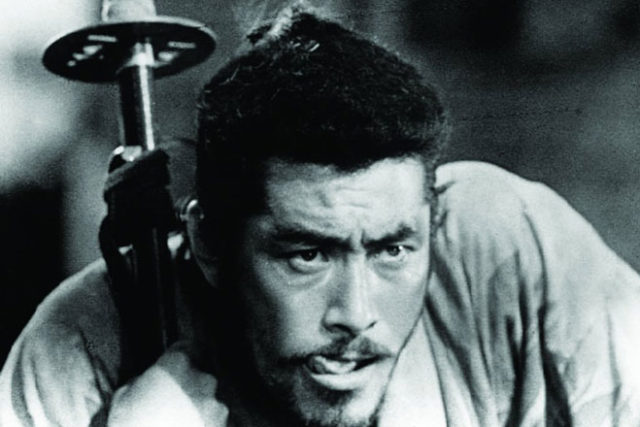By David Yamaguchi
The North American Post
If one were to ask Nisei and Sansei, and Japanese of similar vintages at home and abroad to name one Japanese male lead actor they remember, the name that would probably come up most often is that of Toshiro Mifune.
For throughout our lives we have followed Mr. Mifune through classics such as “Stray Dog” (Nora Inu, 1949), where he plays the part of a young detective in postwar Tokyo whose pistol is stolen and used in crimes.
After that came “Seven Samurai” (1954), “Yojimbo” [Bodyguard, 1961], and “Zatoichi Meets Yojimbo” (1970). In these films and others, Mifune masters the part of the noble disheveled ronin (masterless samurai) trying to set the world straight in his own way. These were the roles for which he would be remembered for all time.
There are also the veteran actors’ roles which he played superbly. These include “Admiral Yamamoto” (1968) in which he portrays the lead imperial navy commander. And of course, there is “Shogun” (1981), the TV series where he is the all-powerful military ruler.
The late director Akira Kurosawa—in whose films Mifune frequently starred—was right: Mifune’s outsize screen presence draws one’s eyes in a way that few actors can match.
By comparison, today’s senior Japanese actors seem frail by comparison. These include Koji Yakusho—the “Tom Hanks” of Japan (“Shall We Dance” [1996], “The Eel,” “Hara-kiri”), Ken Watanabe (“The Last Samurai”), and Hiroyuki Sanada (“Twilight Samurai”).
Now, along comes a retrospective review of Mr. Mifune’s career. Featuring interviews with co-stars, “Mifune: The Last Samurai” also explores the real-life person off-screen, including his love of cars, his marriage to actress Sachiko Yoshimine, and his struggles with alcohol.
The new film offers a good opportunity for readers to think back on where they were in life when they saw each of Mr. Mifune’s films, and to remember.
“Mifune: The Last Samurai” (Steven Okazaki, 2015, 80 min.) opens on Friday, Jan. 6 at the Grand Illusion Theater (1403 NE 50th St., Seattle). (Note: this is an old theater, complete with stairs and cramped bathrooms.)







